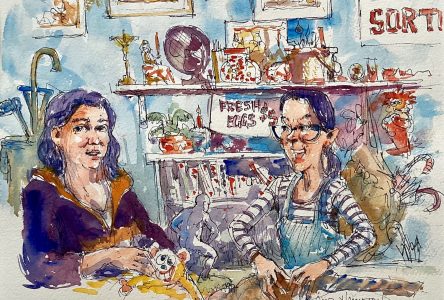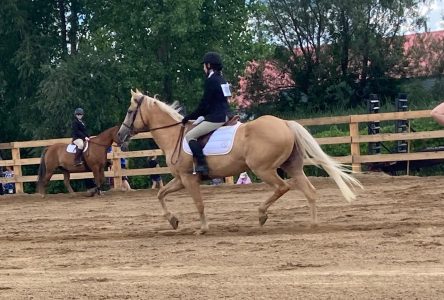It wasn’t until German-born artist and sculptor Ursula Kofahl Lampron immigrated to the United States at the age of 5 that she received her first pencil. Placing lead to paper, she came away with a drawing of a horse, a simple yet sophisticated act for a girl who was brand-new to the medium. It was at that moment that Lampron’s artistic career began, one that drew on her natural abilities to form what later became her artistic vision.
Horses became Lampron’s starting point into art, going from a childhood fixation to a muse-like figure that she likened to the feminine form.
“Horses are like a woman,” Lampron explains. “They can be very fearful or frightened easily if they don’t trust you, but if they’re pushed into a corner they’ll fight their way out. A lot of people relate horses to the masculine with their strength and power, but it really represents the feminine persona to me.”
When Lampron moved to Quebec in the 1970s with her husband, the couple purchased a farm where they began to work closely alongside horses. Being around the animal daily allowed her to familiarize herself with the horse’s contours and form, finding herself fascinated with the muscular movements visible in their bodies. This kinetic motion was not unfamiliar, and she found herself likening it to the feminine form, particularly female dancers whose bodies contain a lean muscularity visible beneath the skin with each movement.
As her practice progressed from drawings to paintings, Lampron soon began sculpting horses out of clay to capture the feminine spirit, working to express an emotion rather than the animal itself. Her sculptures strike a variety of poses, each conveying a sense of fluidity and character rather than a static pose. These figures have an impressive tour history around the world, being shown in places like the Musée du Louvre, Florence, New York City, the Hampton Classic Horse Show, and many more.
Femininity is at the core of Lampron’s paintings as well, taking a subtle approach in her portraits of women in dresses who often face away from the viewer. These women often appear as dancers, their body language seemingly unaware of anyone’s gaze as their faces remain obscured from view, a deliberate act that Lampron takes to avoid the audience inquiring about the identity of the woman in question. Her faceless paintings allow the audience to consider form and emotion present on her canvases instead of anything given away by her subject’s facial expression.
“I’d rather have the audience interact with the painting and project their own feelings,” she says, speaking on her choice to have her subjects be anonymous. “[Art is] not just about the artist, it’s about the person who is viewing the art too. It’s an exchange. When you put a face on a person, unless it’s a portrait, you’re projecting emotions.”
In these paintings of faceless ballerinas exists a sense of power and beauty in the feminine form, similar to her horse sculptures. Yet, it’s not just young and strong bodies that interest Lampron, whether her subjects are human or animal, as she finds visual stories to tell in all sorts of figures.
“An old woman’s body, or a horse that’s old and used up, can be beautiful too. It shows the history of that life… Maybe that’s what I’ll go back and paint, that ugly horse and the destroyed body, but in a way that’s not repugnant.”
She is currently focused on getting back in her studio, after a brief absence from painting as she recovers from chemotherapy. The fearlessness she displays in her art translates to the way she lives her life, as cancer will not stop her from expressing herself.
In non-lockdown times, her studio in Knowlton is located at 250 Knowlton Road and open by appointment only. Her creative process is not one that follows any planning in advance, but she’s keen to be getting back to what she loves most. You can follow her progress at https://ursula.simdif.com/.
“My work is an ongoing form of evolution. I don’t know exactly where it will lead me, but it will always be something positive.”
This project has been made possible by the Community Media Strategic Support Fund offered jointly by the Official Language Minority Community Media Consortium and the Government of Canada.


